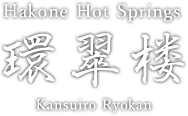Facilities
Ryokan Facilities
With a history over 400 years as a hot spring resort, the Kansuiro Ryokan has retained its beauty and dignity as a historic,Japanese inn.
Kansuiro Ryokan, built in 1919 (Established in 1614), is highly rated example of traditional Japanese wooden architecture
and has been designated as a Registered Cultural Property
of Japan. The interior is filled with precious
Japanese antiques. The decoration of the interiors have been beautifully retained. Kansuiro Ryokan is also well known as an inn frequented by many Japanese celebrities over the years.
Click here to view a selection of interior and exterior photographs of the Kansuiro Ryokan.
-
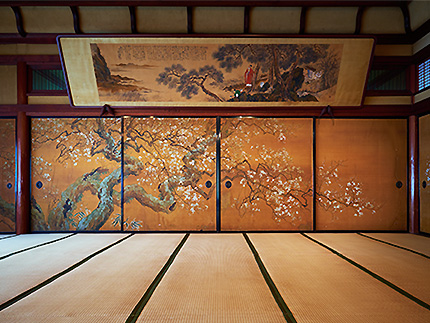
Large Hall (banquet room)
- Jindai KakuA large hall - Jindai Kaku. The name 'Jindaikaku' comes from the Japanese Jindai cedar wood. The wood used for the ceiling is several hundred years old. These restoration Japan cedars have been either buried under ground or under water for more than 1000 years. This wood was discovered in the mountains in the Hakone region.
-
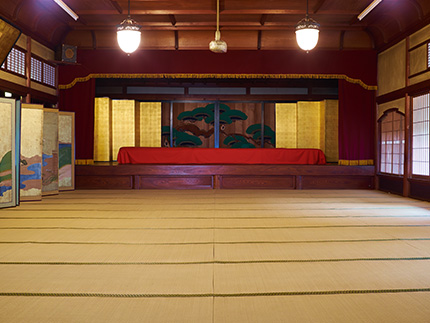
Large Hall (banquet room)
- Bansho KakuA large hall with a stage. It is made with Jindai cedars and cypresses. A framed calligraphy by the artist Matsuura Ranshu of Lord Hirato, who became a count, hangs in this hall.
-
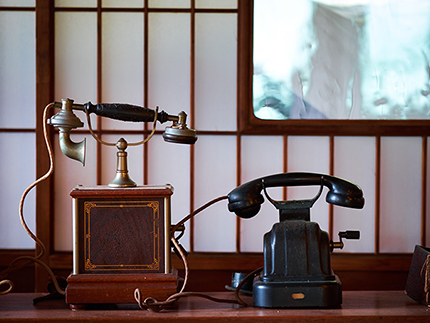
Large hall (banquet room)
- Hosen KakuThe ceiling is made with Jindai cedars. This hall can also be used as a meeting room. Historic artifacts such as an antique telephone and others are also exhibited in this hall.
-
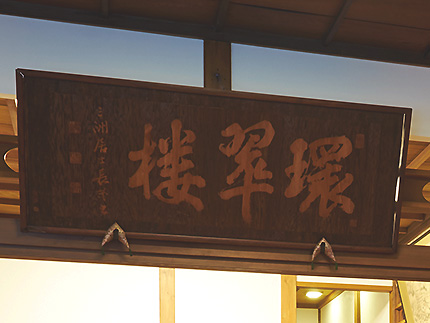
Kansuirou Museum
The letters of Kansuiro in the wooden logo plate is a writing by a calligrapher Cho Sanshu. One of a rare works that has inscription of Shirakawa Sengoku.
